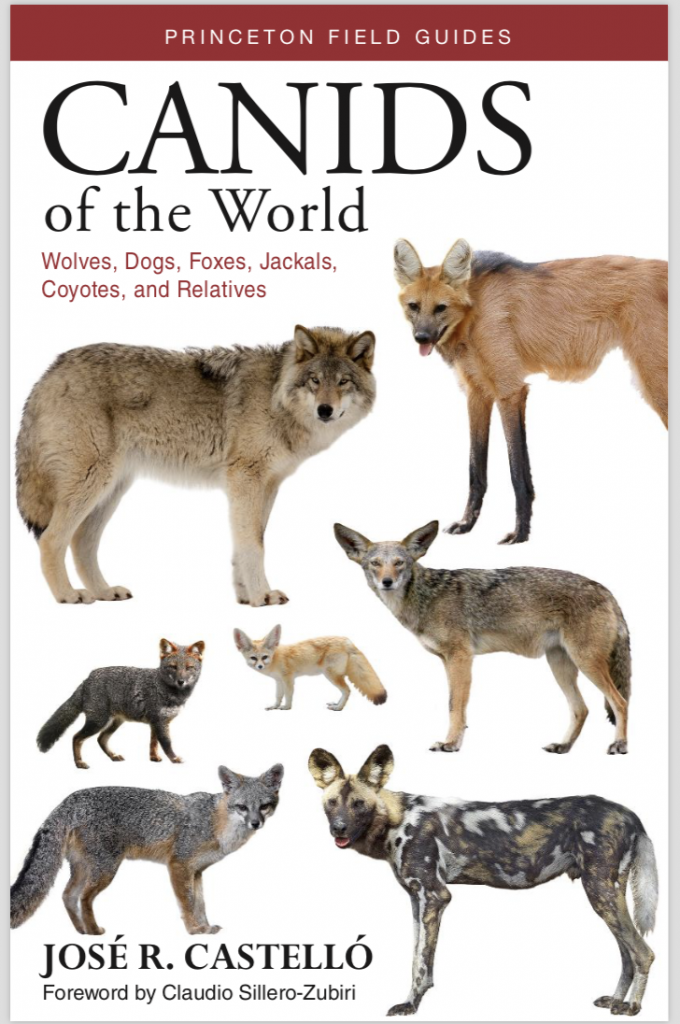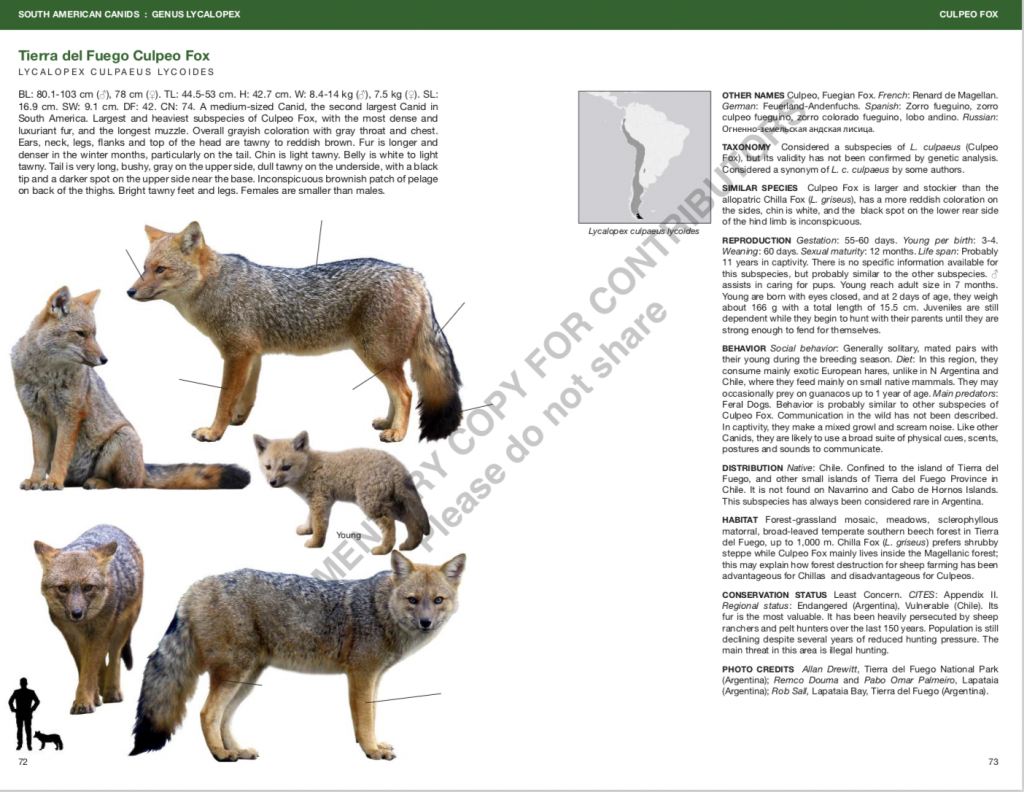Book Review: Canids of the World

Some of you may already have a copy of José R. Castelló’s “Bovids of the World”. If so, you will be familiar with the format of his latest field guide, which covers every species and sub-species of the planet’s canids. Clearly a real labour of love.
I enjoyed the consistency of this guide: it has a format which makes it particularly easy to use. Each species includes a range map and exactly one page of information covering behaviour, similar species, habitat and taxonomy along with a second page of images. And these image pages are exceptionally good: each includes several photos of animals taken from the front and sides, often so perfectly posed you could be forgiven for thinking they are illustrations. And the consistency of the images make it a really helpful for identification. When using photographic field guides it can often be difficult to compare pictures of different species taken from different angles.

Some of the taxonomy is interesting too and presumably reflects the latest discussion. José has split north American Red Foxes (Vulpes fulva) from the rest (Vulpes vulpes), as well as splitting Japanese Raccoon Dogs from those on the mainland. While Dingos are a subspecies of Canis familiaris. Not sure how controversial any of that is, though I wasn’t aware that science was (re)considering Vulpes fulva as a full species.
A lovely book for an important group of mammals, most of which are still fairly easy to see in the right places. I still have three species left. Two are easy if I can get to the right places, but I suspect I will be waiting a long time for a Bush Dog.
Jon
November 2018
7 Comments
-
-
Jose R Castello
Thank you for the reference, Vladimir: The Great Lakes Region is a melting pot for vicariant red fox (Vulpes vulpes) populations. Kristina L Black Sonia K Petty Volker C Radeloff Jonathan N Pauli. Journal of Mammalogy, Volume 99, Issue 5, 10 October 2018, Pages 1229–1236.
Unfortunately, this paper came out after the book was published. Taxonomy indeed is far from solved in Canidae…
-
-
Leave a Reply
You must be logged in to post a comment.


Vladimir Dinets
There were three range-wide studies of red fox genetics. Kutschera et al. (2013) found no reason for splitting. Statham et al. (2014) proposed splitting, but they used Phylogenetic Species Concept in its most unscientific form, and their own data contradict their suggestion. Finally, Black et al. (2018) provided conclusive evidence against the split.
The raccoon dog split is much better substantiated: among other things, there are major differences in chromosome numbers. IUCN Canid Group rejected it in 2001 but there’s been more evidence recently (see, for example, Hong et al. 2018).